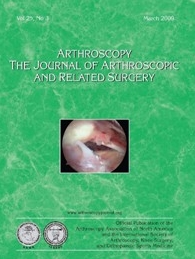
SHOULDER & ELBOW
In situ vs. tear completion: Surgical repair of partial-thickness rotator cuff tears
Arthroscopy. 2015 Nov;31(11):2191-8100 patients with partial-thickness rotator cuff tear were randomized to receive surgical repair using either an in situ repair technique or tear completion repair technique. The purpose of the study was to compare the clinical outcomes of the two surgical techniques, and determine if in situ repair results in improved function of the rotator cuff. No significant differences in pain, function, or range of motion were noted at any time point between the two groups. The overall incidence of retear did not differ significantly between groups, but favoured in situ repair. When looking exclusively at bursal-sided tears, the retear rate was significantly higher in the tear completion group.
Unlock the full ACE Report
You have access to {0} free articles per month.Click below to unlock and view this {1}
Unlock NowCritical appraisals of the latest, high-impact randomized controlled trials and systematic reviews in orthopaedics
Access to OrthoEvidence podcast content, including collaborations with the Journal of Bone and Joint Surgery, interviews with internationally recognized surgeons, and roundtable discussions on orthopaedic news and topics
Subscription to The Pulse, a twice-weekly evidence-based newsletter designed to help you make better clinical decisions
Exclusive access to original content articles, including in-house systematic reviews, and articles on health research methods and hot orthopaedic topics
Or upgrade today and gain access to all OrthoEvidence content for just $1.99 per week.
Already have an account? Log in


Subscribe to "The Pulse"
Evidence-Based Orthopaedics direct to your inbox.
{0} of {1} free articles
Become an OrthoEvidence Premium Member. Expand your perspective with high-quality evidence.
Upgrade Now












































































